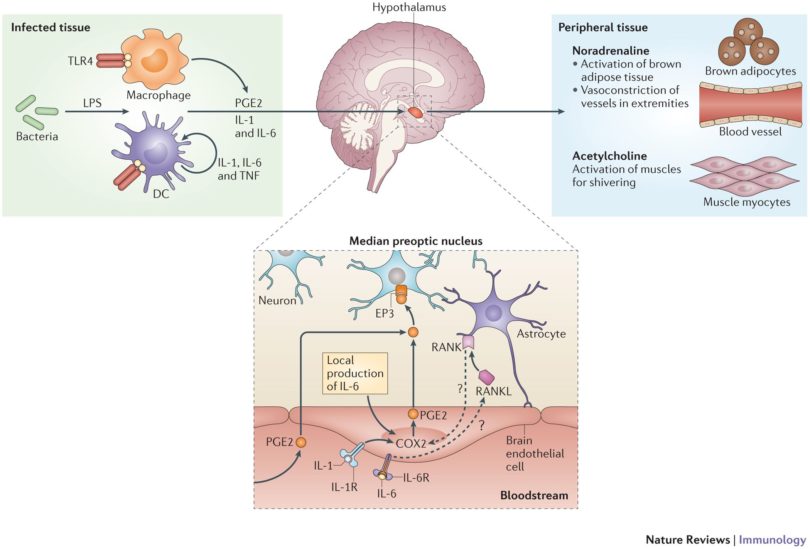Nature Reviews Immunology volume 15, pages335–349(2015) Sharon S. Evans, Elizabeth A. Repasky & Daniel T. Fisher
Key Points
- The hallmark fever response during infection and disease has been maintained throughout hundreds of millions of years in endothermic (warm-blooded) and ectothermic (cold-blooded) species.
- Febrile temperatures boost the probability of an effective immune response by stimulating both the innate and the adaptive arms of the immune system.
- The pyrogenic cytokine interleukin-6 (IL-6) contributes to two phases of the febrile response: it elevates the core body temperature via thermoregulatory autonomic mechanisms, and it also serves as a thermally sensitive effector molecule that amplifies lymphocyte trafficking into lymphoid organs.
- There is emerging evidence that adrenergic signalling pathways associated with thermogenesis can greatly influence immune cell function.
Abstract
Fever is a cardinal response to infection that has been conserved in warm-blooded and cold-blooded vertebrates for more than 600 million years of evolution. The fever response is executed by integrated physiological and neuronal circuitry and confers a survival benefit during infection. In this Review, we discuss our current understanding of how the inflammatory cues delivered by the thermal element of fever stimulate innate and adaptive immune responses. We further highlight the unexpected multiplicity of roles of the pyrogenic cytokine interleukin-6 (IL-6), both during fever induction and during the mobilization of lymphocytes to the lymphoid organs that are the staging ground for immune defence. We also discuss the emerging evidence suggesting that the adrenergic signalling pathways associated with thermogenesis shape immune cell function.
CLICK HERE to access complete paper

